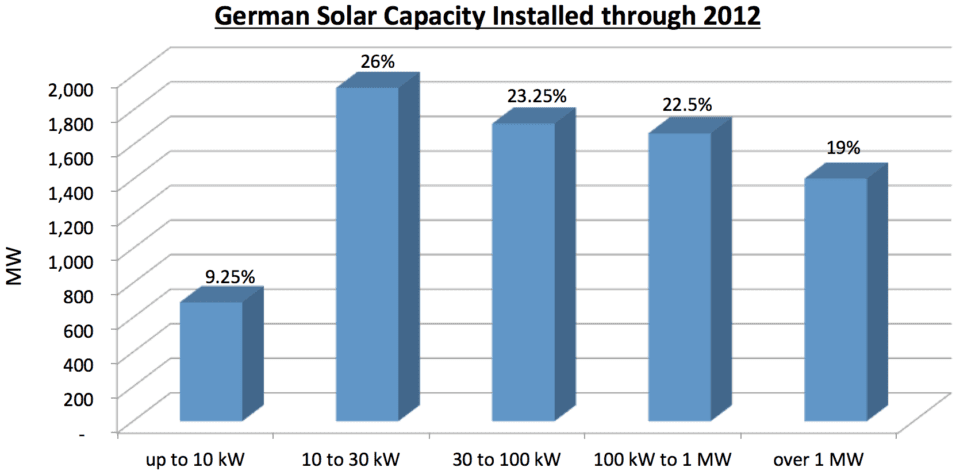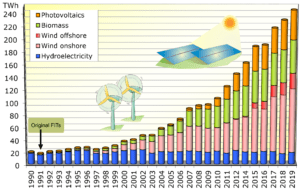Why Fire-Prone Communities Need Community Microgrids Now
This blog post explains the crucial need for Community Microgrids in fire-prone regions.
Read More
And what they mean for the United States
Germany provides a real-world example of how the United States can unleash the vastly underserved wholesale distributed generation (WDG) market.
Starting in 2000, Germany enacted a national Feed-In Tariff (FIT) that propelled the country to become the world’s clean energy leader. The nation experienced tremendous growth of local renewable energy because their FIT unleashed the WDG market segment. The German FIT targeted the WDG market by making it easy to build smaller local renewable energy projects in the built environment (on preexisting homes, buildings, and structures), connect them to the grid, and sell power to the local utility at a fixed rate using a standardized, long-term, and guaranteed contract.
The world owes Germany a debt of gratitude for instituting its fit. The German FIT achieved economies of scale, bringing down the price of solar. In large part because of its FIT, solar prices have plummeted since the German FIT was enacted in 2000.
Saerbeck, Germany provides a great example of a German success story, producing 400% more renewable energy locally than the community needs.
Germany’s solar deployments are almost entirely sub-2 megawatt projects on built environments and interconnected to the distribution grid (not behind-the-meter):

To date, Germany has integrated nearly 50 gigawatts (GW) of solar photovoltaics into its grid . By 2016, the country had the most solar capacity anywhere in the world, and it had installations totaling almost 4 GW in 2019 alone.

During the 10-year period following the introduction of its national FIT, Germany ran laps around the United States, including deploying over ten times more solar capacity than California:

Using FITs, Germany has removed obstacles and uncertainties from renewable energy’s path. FITs can easily reduce costs by 20% by preempting bureaucracy alone.

Predictable, streamlined procurement and interconnection radically reduced the costs to build local renewable energy projects in Germany.
Replicating German scale and efficiencies yields commercial-scale rooftop solar in California at the lowest energy price possible: 3¢/kWh for delivered energy. No source of energy we’re procuring is in that low price range when you consider the costs of transmission delivery; FIT projects do not use the transmission grid, which alone has a price of 2¢/kWh in California as of 2020 (levelized to 3¢/kWh over 20 years).

All data in the above table is current as of April 2017; California’s effective rate has been reduced since then, giving the current 3¢/kWh price. The foreign exchange conversion applied in this table is 1 Euro to 1.07 US$. California’s effective rate is reduced 40% due to tax incentives and then an additional 33% due to the superior solar resource.
In addition, a significant percentage of Germany’s renewable energy installed under the country’s FIT is in the hands of the people.

The only approach that has been proven to unleash wholesale distributed generation (WDG) in the United States.
The latest in clean local energy
Learn about our innovative projects and initiatives on our blog, and see what others are reporting about our important work.
This blog post explains the crucial need for Community Microgrids in fire-prone regions.
Read MoreRedwood Energy reports on Clean Coalition’s expert commentary, warning that AB 942 threatens rooftop solar affordability and undermines the clean‑energy transition
Read articleThis Clean Coalition hosted webinar took place on 27 June 2025 at 10:00 AM PST.
Read More